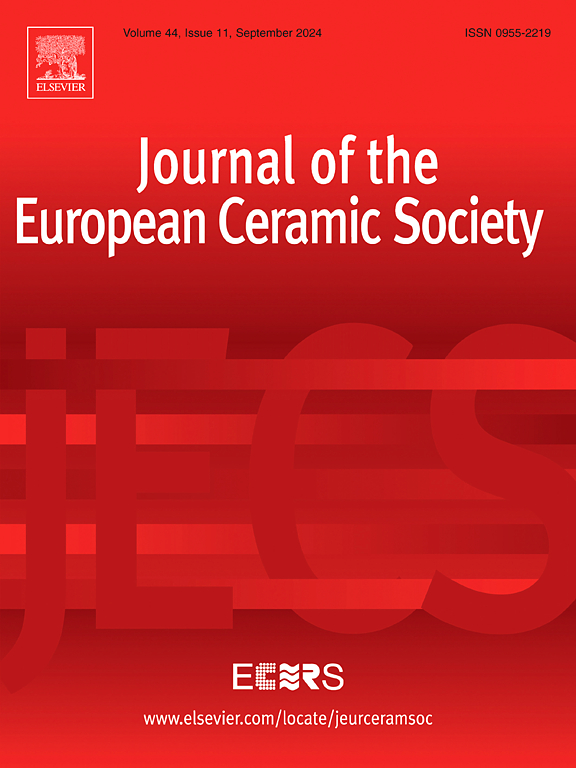One-pot preparation of 3D-printed Co-loaded silica ceramic catalysts
IF 5.8
2区 材料科学
Q1 MATERIALS SCIENCE, CERAMICS
Journal of The European Ceramic Society
Pub Date : 2025-01-19
DOI:10.1016/j.jeurceramsoc.2025.117225
引用次数: 0
Abstract
3D-printed catalysts offer several advantages, including high efficiency, energy savings, and design flexibility. However, the one-pot preparation of 3D-printed catalysts with favourable catalytic performance and uniform distribution of catalytically active components remains a significant challenge. This study explores the preparation of Co-loaded silica ceramic-based catalysts via a one-pot method using direct ink writing (DIW). Silica ceramic-based catalysts with varying grid sizes and Co loadings (1–3 wt%) were fabricated using aluminium dihydrogen phosphate (AP) as an inorganic binder and hydroxypropyl methylcellulose (HPMC) as an organic binder. Co was uniformly distributed without aggregation, and the loading was easily customisable. The catalytic conversion rate of p-nitrophenol (4-NP) reached 100 % and remained at 95.4 % after eight cycles. Furthermore, the compressive stresses of AP-C and HPMC-C reached 93.7 and 11.3 MPa, respectively. This one-pot method provides a novel, facile, and efficient approach for fabricating 3D-printed silica ceramic-based catalysts in one step.
求助全文
约1分钟内获得全文
求助全文
来源期刊

Journal of The European Ceramic Society
工程技术-材料科学:硅酸盐
CiteScore
10.70
自引率
12.30%
发文量
863
审稿时长
35 days
期刊介绍:
The Journal of the European Ceramic Society publishes the results of original research and reviews relating to ceramic materials. Papers of either an experimental or theoretical character will be welcomed on a fully international basis. The emphasis is on novel generic science concerning the relationships between processing, microstructure and properties of polycrystalline ceramics consolidated at high temperature. Papers may relate to any of the conventional categories of ceramic: structural, functional, traditional or composite. The central objective is to sustain a high standard of research quality by means of appropriate reviewing procedures.
 求助内容:
求助内容: 应助结果提醒方式:
应助结果提醒方式:


